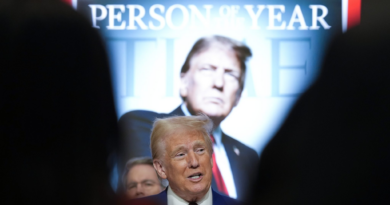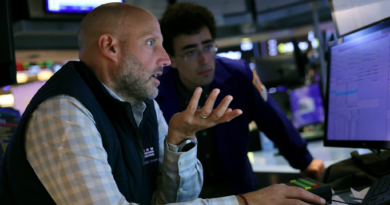Shareholders are on a spree, raking in more in dividends than the average worker makes in eight months
The shareholder takes it all, the worker standing small— in the adjusted words of ABBA. These days, investors of companies are gliding away from the boardroom with way more money than those who keep the wheel turning.
Over the past couple of years, shareholders have been on a spree, far surpassing employees in terms of what they pocket. It all means that today, International Workers’ Day, “is more of a celebration for how well shareholders have done rather than workers,” Alex Maitland, health and inequality policy advisor at Oxfam International, tells Fortune.
The inequality between those at the top and bottom of the food chain has widened during the pandemic. From 2020 to 2023, shareholders far outpaced workers as their dividend payments grew 14 times faster than employee salaries across 31 countries, according to a report from Oxfam. Looking at asset management company Janus Henderson’s Global Dividend Index, to gauge dividend payments and Trading Economics for wages, Oxfam found the shareholders’ worth amounted to 81% of the international GDP in just three years.
Companies and their investors seem to have bounced back from COVID-19 and wartime inflation, but that growth hasn’t really been reflected in workers’ wages, adds Maitland. Across the globe, dividend payouts soared by 45% in three years, totaling $195 billion. But for the average worker, wages increased by a measly 3.3% over the same time frame. During a time marked by a high cost of living, the sluggish pace of said raises is not nearly enough to provide financial security.
As it stands, only 2 of the 37 countries Oxfam analyzed using Living Wage Coalition data have instituted a minimum wage above the living wage. On average, most minimum wages only cover 38% of said living standard.
The disparity between investor and worker profits exposes a deeper hypocrisy, explains Maitland, which “contradicts so much of what big companies like to put out there about how they’re for their employees and that society,” he said. “Looking at the shareholders’ winnings it becomes obvious that these employers” are clearly prioritizing the shareholder interest, but [also] goes to show that what they say is so different to what they actually do.”
Of course, the solidification of shareholder power—and the 1% in general—has been a decades-long process. The prioritization of the few-but-powerful mighty stretches back to the 1970s, or what Maitland calls “the dawn of this neoliberal project.” But as he explains, they were walking away with about 10% of company profits back then, and now they’re raking in between 70% and 90%. The early 2020s have been marked by back-to-back record years for shareholders, and Janus Henderson dividend data projects this year will be no different, Maitland adds.
Left unchecked, the top 1% accounts for a striking 43% of all global financial assets, according to Oxfam’s report. In 2023, the ultra-rich took away, on average, $9,000 in dividends. It would take the average worker around eight months to make the same amount, per Oxfam.
“I see this as a canary in the coal mine of inequality,” says Maitland, explaining that right now, “money is making more money than labor.” He adds this is not just a Western issue, or one centered in the U.S., but a global phenomenon where shareholders are believed to come first.
While high GDP and economic growth might look like success to some, Maitland claims there’s a larger issue at play about how we want to build a new future. “You have to think about what kind of world we want to live in,” he says. “Before the resources have been extracted by large corporations, if people can only afford enough to survive, then that’s not a successful side of an economy, as far as I’m concerned.”
But the runaway success of a shareholder doesn’t mean it’s all doom and gloom for everyone else. Citing a “renewed emphasis on collective bargaining” as fueled by rising union popularity, Maitland says he’s “a big believer in the fact that this doesn’t have to be a negative story and there is no hope.”
The shareholder-first model isn’t the only business model out there, as Maitland speaks of models popping up where employees own a share, or the success of work cooperatives. These alternatives go a long way towards reshaping our global inequality crisis, as Maitland adds that the shares of wealth for the bottom 50% would double if just 10% of every company in the U.S. was employee-owned. It could help address the racial wealth gap, too, as Maitland says this employment option would double the median wealth for Black households.
Perhaps a new generation of companies doesn’t have to carry this shareholders-first torch. After all, “It’s not like there’s a natural law that says all businesses have to focus on the shareholders, it’s a product of the economy,” Maitland says.



